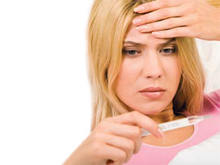 |
What is pneumonia?
Pneumonia is an inflammatory condition of the lung, where the collection of fluid in it hampers its absorption of oxygen. There could be different causes of it, like infection with bacteria, viruses, fungi, or parasites, and chemical or physical injury to the lungs.
|
monsoons are here. How much should you worry about getting wet?
How does the infection come inside my lungs?
When airborne droplets are inhaled, these infection causes enter your lung. When one part of your body is infected, these microbes could also travel through your bloodstream to your oxygen chambers
What happens then?
Our immune system is up and active against intruders like these. Chemical warfare ensues, where the immune system pours substances on the microbes to kill them. This war within our body, like any other, causes damage elsewhere too – wherein symptoms like fever, chills, fatigue, etc. are expressed.
Are there different types of pneumonia?
When you catch such infections, primarily from being in public places (except a hospital), it is called community-acquired pneumonia. Hospital-acquired pneumonia on the other hand, is acquired during or after hospitalisation for another illness or procedure. You get it within 72 hrs of admission – so be careful of the kind of hospital you get into.
Do I need to see the doctor soon?
While there are many microbes that can cause bacterial pneumonia, the most frequent culprit is a bug called streptococcus pneumonia. It’s important to understand that symptoms of pneumonia need immediate medical evaluation. Physical examination by a doctor may prevent life-threatening spread of the infection from lung to rest of body through bloodstream, a condition called sepsis.
What would my doctor do?
Typically he would ask for chest x-rays, blood test, examination of the cough, and sometimes chest CT (computed tomography). Most cases of pneumonia can be treated without hospitalisation with oral antibiotics, rest and fluids. However for those with serious symptoms, other medical problems, and for the elderly, he would ask them to be hospitalised for intravenous antibiotics and other supportive measures like oxygen, intravenous fluids and sometimes in serious cases, ventilation.
Could I have prevented this?
Not always, but do get treatment for underlying illnesses (such as AIDS). Stop smoking, if you do. Children and the elderly could use with vaccinations against certain bacteria.
|
5 Symptoms
- Cough with greenish or yellow phlegm
- High fever with shaking chills
- Shortness of breath
- Sharp or stabbing pain, chest pain specially worsened with respiration
- Loss of appetite, fatigue, blueness of the skin, nausea, vomiting, joint pains or muscle aches, etc.
|
|
 |
Dr. Milan Chhetri is Consultant Phycian - internal medicine at Apollo Gleneagles hospitals, Kolkata |
|